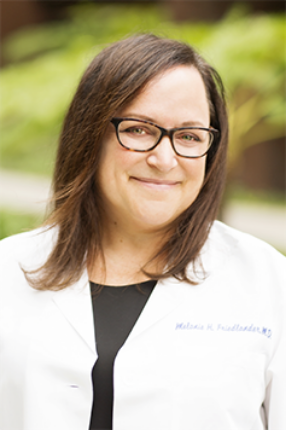Skin Cancer, Hernia, & General Surgery
Renee M
Doctor Bhayani is a great surgeon, he has done 2 operations on me in the past year and I would recommend him highly. He is very friendly and has a good bedside manner.
Here at South Bay Skin Cancer & Melanoma Institute, our surgeons treat a variety of skin cancers ranging from Basal Cell carcinoma, Squamous Cell carcinoma, Melanoma and rare ones like Merkel Cell carcinoma. We work closely with our Dermatology, Plastic Surgery, Oncology and Radiation Oncology colleagues to provide the most tailored treatment for our patients.
Melanoma is a serious and potentially deadly kind of skin cancer, but there is hope. The surgeons at Association of South Bay Surgeons check irregular moles, diagnose melanoma, and provide effective treatments like excisional skin biopsy when they’re needed.
Melanoma is a type of aggressive skin cancer. This type of cancer comes from cells which produce skin color. The cause of this skin cancer is likely from overexposure to the sun and its powerful ultraviolet (UV) rays. The damage from overexposure to the sun can lead to moles or skin changes. Not all moles are cancerous, but those with unusual characteristics may indicate melanoma. It is highly recommended to get your skin checked regularly especially if you are under the sun a lot or frequent the tanning salon.
The cause of malignant melanoma is the uncontrolled expansion of the melanocytes, the pigment cells of the skin. Studies suggest that UV radiation is a major contributor to this melanocyte growth. Both sun exposure and tanning beds may cause melanomas. UV radiation damages the DNA within the cells, and this results in mutations in the genes. As the rapid cellular division occurs, those mutations are transmitted to new sets of cells. Soon, the growth rate can be uncontrollable, resulting in tumors.
Usually there are no symptoms associated with melanoma until late stages of the disease.
Only a doctor can diagnose malignant melanomas. A malignant melanoma is typically asymmetrical, has an irregular border, has more than 1 color, and is more than 6 mm in size. Patients should also keep a close watch on wounds as they heal, because slow-healing lesions may indicate melanoma. The doctor performs both a visual exam and another type of skin exam, such as a dermatoscopic exam. Growths that are suspected to be malignant melanomas are typically biopsied.
The treatment of this disease usually requires a team of physicians such as a dermatologist, oncologist, and surgeon. However, once diagnosed with melanoma the only cure is complete resection. This will require a wide resection around the melanoma skin site. Also, melanoma travels from the original location to other locations in the body through lymph nodes. If the melanoma is deep enough on the skin it may be necessary to check and remove several surrounding lymph nodes to see if the melanoma has not spread.
Aside from surgery, other medical treatments such as chemotherapy, immunotherapy and radiation therapy may play a supporting role.
This will depend on the location of the melanoma and whether or not lymph nodes will need to be taken. Also at times if the site of the melanoma is on the face or is large a plastic surgeon may be needed for reconstruction.
For the majority of patients with skin melanoma, patients usually return home 2-3 hours after surgery. Select few may require an overnight stay in the hospital depending on if or how many lymph nodes are taken and how large the skin resection is. Most patients have mild surgery incision site pain lasting 3-5 days and usually resume full physical activity within 2-3 weeks.
Squamous cell carcinoma (SCC) of the skin is the second most common form of skin cancer, characterized by abnormal, accelerated growth of squamous cells. When caught early, most SCCs are curable.
One of three main types of cells in the top layer of the skin (the epidermis), squamous cells are flat cells located near the surface of the skin that shed continuously as new ones form.
SCC occurs when DNA damage from exposure to ultraviolet radiation or other damaging agents trigger abnormal changes in the squamous cells. SCCs can appear as scaly red patches, open sores, rough, thickened or wart-like skin, or raised growths with a central depression. At times, SCCs may crust over, itch or bleed. The lesions most commonly arise in sun-exposed areas of the body.
While the majority of SCCs can be easily and successfully treated, if allowed to grow, these lesions can become disfiguring, dangerous and even deadly. Untreated SCCs can become invasive, grow into deeper layers of skin and spread to other parts of the body. Contact us today for an appointment.
Basal cell carcinoma (BCC) is the most common form of skin cancer and the most frequently occurring form of all cancers. In the U.S. alone, more than 4 million cases are diagnosed each year. BCCs arise from abnormal, uncontrolled growth of basal cells.
Because BCCs grow slowly, most are curable and cause minimal damage when caught and treated early. Understanding BCC causes, risk factors and warning signs can help you detect them early, when they are easiest to treat and cure.
One of three main types of cells in the top layer of the skin, basal cells shed as new ones form. BCC most often occurs when DNA damage from exposure to ultraviolet (UV) radiation from the sun or indoor tanning triggers changes in basal cells in the outermost layer of skin (epidermis), resulting in uncontrolled growth.
BCCs can look like open sores, red patches, pink growths, shiny bumps, scars or growths with slightly elevated, rolled edges and/or a central indentation. At times, BCCs may ooze, crust, itch or bleed. The lesions commonly arise in sun-exposed areas of the body. In patients with darker skin, about half of BCCs are pigmented (meaning brown in color).
While BCCs rarely spread beyond the original tumor site, if allowed to grow, these lesions can be disfiguring and dangerous. Untreated BCCs can become locally invasive, grow wide and deep into the skin and destroy skin, tissue and bone. The longer you wait to have a BCC treated, the more likely it is to recur, sometimes repeatedly.
There are some highly unusual, aggressive cases when BCC spreads to other parts of the body. In even rarer instances, this type of BCC can become life-threatening.
Contact our offices today to schedule an appointment.
*All opinions expressed are the sole viewpoint of the individual patient, and as such should not be treated as medical advice. Results will vary for every individual.*

Skin Cancer, Hernia, & General Surgery

Skin Cancer, Hernia, & Colorectal Surgery

Endocrine & General Surgery

Robotic & General Surgery

Breast & General Surgery & Minimally Invasive Surgery

Skin Cancer, Hernia, & Colorectal Surgery